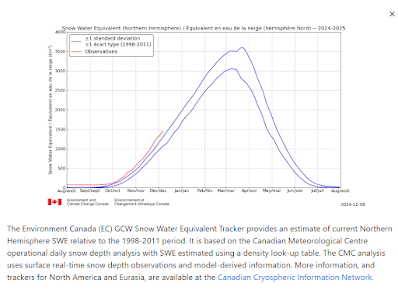Introduction
The legend of Atlantis is an enduring myth that may have more truth to it than is generally believed, because its existence would go a long way in explaining how ancient building techniques and religious symbols all over the world are as similar as they are.
Places as far separated as Peru, Mexico, Egypt, Mesopotamia, India and Cambodia, all have ancient building structures that are remarkably similar. They also have gods carrying handbags and displaying other symbols that are virtually identical in all these places.
At the very least, these places must have been connected by a network of trade and cooperation.
Not a new idea
The illustration below shows us that this is not a new idea. People have been speculating about Atlantis for a long time, and this particular map is a good example of this. However, it contains some glaring errors.
If Atlantis existed some twelve thousand years ago, Scandinavia would have been under a thick layer of ice, and so would the northern parts of North America.
On the other hand, East Asia should have been included. If not as a part of the Atlantis empire, then at least as an important cultural and economic connection.
By Ignatius Donnelly; cropped by Beyond My Ken (talk) 22:14, 28 September 2010 (UTC) - This image is available from the United States Library of Congress's Prints and Photographs division under the digital ID cph.3b36915.This tag does not indicate the copyright status of the attached work. A normal copyright tag is still required. See Commons: Licensing for more information., Public Domain,
https://commons.wikimedia.org/w/index.php?curid=11626443
Remarkable accuracy
However, what's remarkable about this map is not its errors and omissions, but the fact that the island of Atlantis is drawn in at a location that would in fact have been dry land at the time of Atlantis' supposed existence.
The author of the map could not have known this for sure because the map was drawn before our ocean floors were mapped out. At most, he was aware of the Acores, which are today found in the region. But the landmass is drawn into the map, not because of the Acores, but because this is where Plato in his time said that the island was located. That's more than two thousand years ago.
 |
| Atlantis |
Strategic location
If a dominant civilization existed at the end of the great ice age, we can hardly imagine a better location for its center.
The island of Atlantis was large enough to sustain a civilization, it was near impossible to invade due to its surrounding seas, and its central position on the map would have made it a perfect spring board for imperial expansion. So, it's clear that this part of the legend has merit. But could the island really have sunk into the ocean in as little as a night and a day, as claimed by Plato?
More than an earthquake?
While it's possible to imagine an island the size of England sinking into the ocean due to an earthquake, evidence suggests that this didn't happen, because if it did, the reconstructed map should show no land at the location of Atlantis.
So, for this part of the legend to be true, the oceans must have risen abruptly.
But conventional theory has it that the oceans have risen slowly and steadily over thousands of years due to a steady melting of the ice caps.
Some catastrophes are known to have happened, such as the flooding of Doggerland in the North Sea some ten to twelve thousand years ago. But all in all, sea levels have moved higher without much in the way of catastrophe.
Sundaland, in East Asia, is another area that is known to have sunk into the sea with rising sea levels, and some have suggested that the legend of Atlantis is merely a reference to places such as Sundaland and Doggerland. But these places are not where Plato puts Atlantis. Nor is it a given that these areas disappeared slowly rather than catastrophically. We merely assume that sea levels rose steadily over centuries because that's how great volumes of snow and ice melt.
However, if large amounts of land ice were to slide into the oceans, there would be catastrophic floodings without any exceptional melting going on, and this could happen very quickly.
Icesheet slippage
For instance, if the current Greenland icesheet slid into the Atlantic ocean, there would be a huge tsunami, followed by a permanent sea rise of up to 7.4 meters. So, if something like that happened in the past, we would have had a situation similar to the one described by Plato.
The strong earthquake that rocked Atlantis, according to Plato's story, may have triggered an icesheet slippage relatively close by, which would have caused a tsunami to wipe out most of the island. Shortly thereafter, there'd be a catastrophic flooding of Doggerland, and this would in turn be followed by a global rise in sea levels, affecting low-lying lands everywhere, including Sunnaland.
So, when the few survivors from Atlantis returned to their island to look for it, they would have found it permanently sunken into the sea. Instead of dry land, they would have found shallows and islands, like Plato said they did.
Rapid disappearance of icesheets
This scenario, if sufficiently large scale, or repeated several times, would have greatly accelerated the melting of the ice caps, because water is a lot more effective than air in melting snow and ice. Instead of air and sun melting the ice over tens of thousands of years, the icesheets would have disappeared within a few thousand years, which is what appears to have happened, based on geological records.
Icesheet slippage can therefore explain how the enormous icecaps of the great ice age came to disappear as quickly as they did. But by what mechanism would this have happened?
The igloo effect
A phenomenon rarely considered when it comes to truly enormous icesheets is what's known as the igloo effect. Yet, this mechanism may be key to understanding why great ice ages tend to come to sudden and catastrophic ends, where ice that has accumulated over tens of thousands of years disappear in a tiny fraction of this time span.
To understand this, we have to recognize that ice and snow are insulators that prevent heat from escaping. For example, the inside of an igloo can be a great deal warmer than outside temperatures, even with a relatively small heat source at its center.
The same goes for icesheets where the temperatures close to the ground can be a great deal warmer than at their surface, because Earth itself is a heat source. In fact, once an icesheet becomes sufficiently thick, temperatures at ground level may go permanently above freezing. Instead of being anchored to the ground through frost, the icesheet comes unglued.
Sitting on top of large pools of fresh water, the icesheet becomes unstable and liable to slip, because ice is virtually frictionless when pressed against a wet surface.
Planetary expansion
Once an icesheet looses its anchoring, a large chunk of it can break loose and slide into the ocean. All it takes is a sufficiently strong earthquake for disaster to ensue. It's therefore interesting to note that there's evidence to suggest that our planet is expanding, and that this happens in fits and starts that coincide with ice ages.
Furthermore, Earth's expansion is lopsided, with the Pacific region expanding faster than the Atlantic. A consequence of this is that Greenland, Canada and Scandinavia have moved southwards from where they were located at the start of the last great ice age.
This explains why it was Canada and Scandinavia that together with Greenland held the bulk of ice on the northern hemisphere during the last great ice age, and why northern Russia was less affected. It also suggests to us that Canada and Scandinavia may have shed their icesheets, largely or in part, by slippage into surrounding waters.
Mass extinctions
There also appears to be a relationship between the size of our planet and the maximum size of land animals. Not only were dinosaurs larger than the mammals that followed them, but ancient mammals were larger than mammals are today, and the same goes for birds. Furthermore, mass extinctions happen periodically, and the latest episodes coincided with what was presumably the latest fits of Earth expansion some twelve and four thousand years ago.
Researchers, such as Stephen Hurrell, have pointed out that mass extinctions are likely due to an increase in gravity that correspond to an increase in the size of our planet. So, it wasn't climate change or human activity that killed off the Saber Tooth Tiger, the Giant Sloth and the Woolly Mammoths. Rather, it was an increase in gravity that did this, coupled with an inability by these animals to respond sufficiently quickly with smaller offspring.
On the other hand, large animals that managed to produce smaller offspring have survived to this day. The African lion being a prime example of this.
This too fits well with the legend of Atlantis where Platon implies that animals at the time were larger and more voracious than they are today.
Conclusion
The legend of Atlantis dovetails well with a number of observations and theories related to the history of our planet. Every aspect of the story can be explained, including the island's sudden and dramatic demise. But the only way to conclusively find out if the legend is true would be to survey its supposed location for human artifacts. Until that happens, we must treat this legend with the same skepticism that we treat any other legend or theory.



















